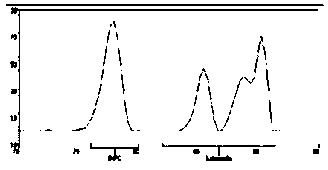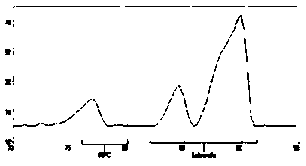Application of BAX PCR method in detection of salmonella in foods
A Salmonella and food technology, applied in the application field of BAXPCR method in the detection of Salmonella in food, can solve the problems of low sensitivity, human injury, cumbersome process, etc., to achieve sensitivity and specificity with strong guarantee, saving manpower, material resources and Financial resources and accurate test results
- Summary
- Abstract
- Description
- Claims
- Application Information
AI Technical Summary
Problems solved by technology
Method used
Image
Examples
Embodiment
[0029] In order to achieve the above object, the invention provides a kind of application of BAX PCR method in food Salmonella detection, comprising the following steps:
[0030] Step 1, placing the sample in the enrichment solution to make an initial suspension;
[0031] Step 2, adding the enrichment liquid extracted in step 1 to the brain heart infusion broth, and carrying out the second enrichment and re-cultivation;
[0032] Step 3. Add the enrichment solution that has been re-cultivated for the second time in step 2 into the lysis tube, add the lysis solution containing protease into the lysis tube, and heat the lysis tube in the heating tube. The lysis tube is placed in the cooling block After cooling in medium, take the lysate and place it in a PCR reaction tube;
[0033] Step 4. The PCR reaction tube in step 3 is tested on the machine.
[0034] In this embodiment, the enrichment solution in step 1 is generally BPW, as well as lactose broth, tryptone soybean broth, et...
Embodiment example 1
[0041] 1) Sample treatment: Weigh 1g of sample into 9ml of pre-enrichment solution BPW to make an initial suspension of 1:10;
[0042] 2) Selective enrichment: After the enrichment in step 1), take 10 μl of the pre-enrichment solution and add it to 0.5 ml of brain heart infusion broth, and incubate at 37°C for 3 hours;
[0043] 3) Lysis: After the enrichment, start the PCR detector to preheat, and start the heating plate at 37°C and 95°C at the same time, add 150μL of protease to 12ml of the lysate, and take 200μL of the lysate into each lysis tube participating in the reaction , and then add 5 μL of enrichment solution. Place the lysis tube on the heating plate at 37°C for 20 minutes, then move the lysis tube to the heating plate at 95°C for 10 minutes, cool the lysis tube in the cooling block for 5 minutes, then carefully pipette 50 μL of the lysate to place on the cooling In the PCR reaction tube in the block (operation should avoid contamination);
[0044] 4) On the mach...
PUM
 Login to View More
Login to View More Abstract
Description
Claims
Application Information
 Login to View More
Login to View More - R&D
- Intellectual Property
- Life Sciences
- Materials
- Tech Scout
- Unparalleled Data Quality
- Higher Quality Content
- 60% Fewer Hallucinations
Browse by: Latest US Patents, China's latest patents, Technical Efficacy Thesaurus, Application Domain, Technology Topic, Popular Technical Reports.
© 2025 PatSnap. All rights reserved.Legal|Privacy policy|Modern Slavery Act Transparency Statement|Sitemap|About US| Contact US: help@patsnap.com



